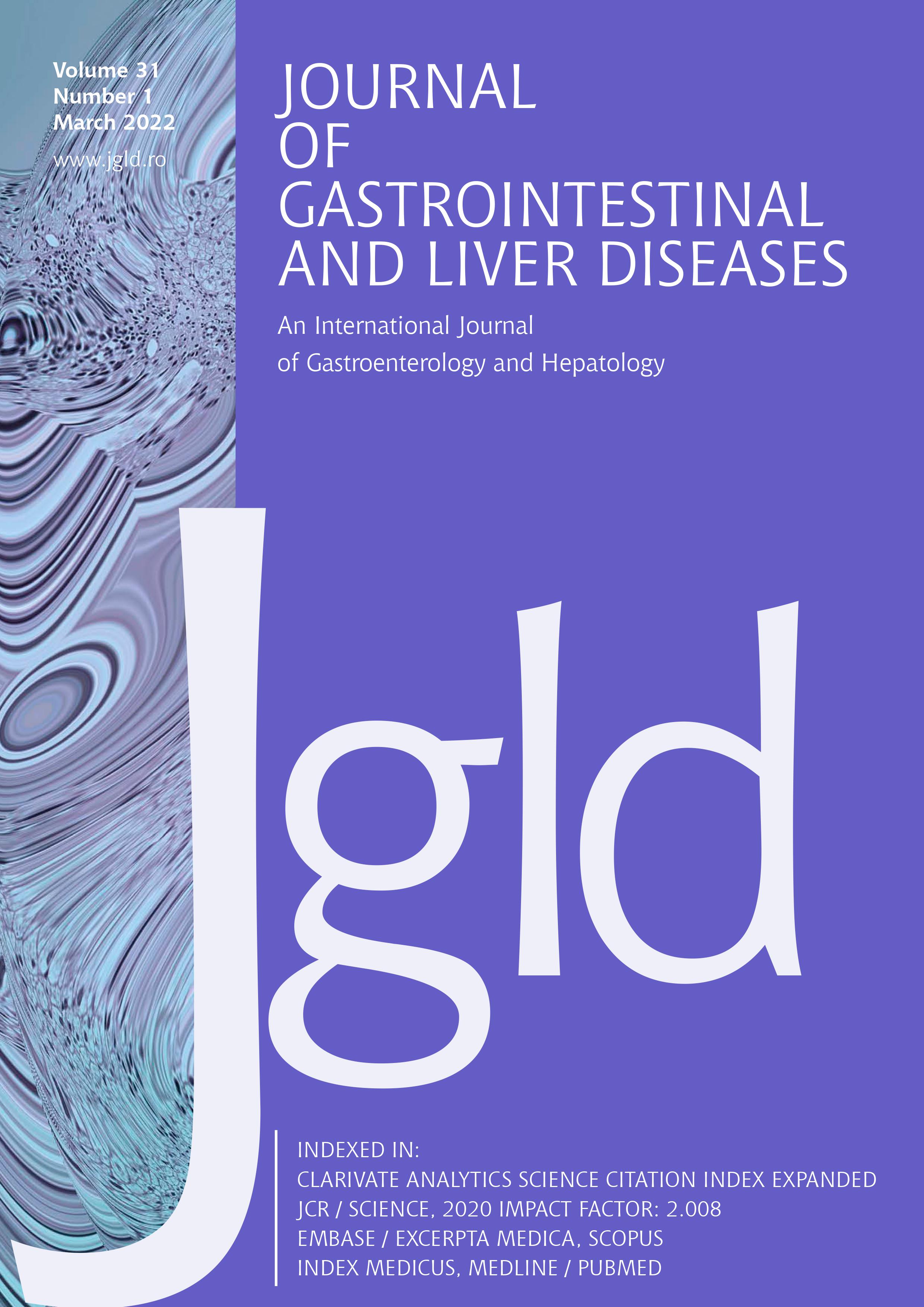Efficacy and Safety of a Novel Triple-anchoring Technique for Colonic Hybrid Endoscopic Mucosal Resection: A Case Series
DOI:
https://doi.org/10.15403/jgld-4225Keywords:
colorectal polyps, endoscopic mucosal resection, EMR, hybrid technique, triple-anchoring EMRAbstract
Background and Aims: A hybrid technique may be a reasonable compromise to make endoscopic mucosal resection (EMR) more reliable for lesions ≥ 20 mm and a good way of approaching to endoscopic submucosal dissection (ESD). The aim of this study was to assess the efficacy and safety of a novel hybrid EMR technique, triple-anchoring EMR (T-EMR) for colorectal lesions 20-30 mm.
Methods: Fifteen patients have been prospectively enrolled to T-EMR from December 2019 to April 2020 in two Endoscopy Units: Policlinico A. Gemelli, Rome, and University Hospital of Udine, Italy. Patients eligible for the study were ≥18 years old with superficial colorectal lesions 20-30 mm, morphologically liable to endoscopic treatment based on chromoendoscopy. The primary endpoint was assessment of the “en bloc” and the free resection margins (R0) rates. The secondary endpoints were resected specimen size, procedure time, complication rate, and recurrence rate at 6 months.
Results: Among the 15 patients enrolled, 12 were males (80%), mean age 68.73±11.04 years. The mean size of the lesions was 24.93±2.89 mm. Mean procedure time was 22.13±4.31 min. T-EMR was performed en bloc in 14/15 patients (93.3%) with R0 in 13/15 patients (86.7%). No major intra-/peri-procedural or delayed complications occurred. At histological analysis, 13/15 lesions (86.7%) were adenomas, while 2 were early colorectal cancer. At a 6-month follow-up colonoscopy, only one patient (6.7%) had a recurrence of adenoma.
Conclusions: T-EMR seems to be an effective and safe option to treat colorectal lesions between 20 and 30 mm, with a short procedure time and low costs.


